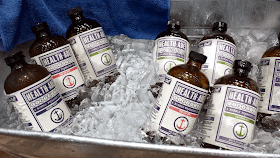1950s Glidden Decorating Pastels inspired by the South Seas
makes me think of Tiki Bars across the country! The 22 colors came in satin, luster,
flat and latex finishes in colors like Paradise Green, Pebble Beach, Jungle
Moss, Teak and Tropic Sun. Changing the color of the walls doesn’t mean the décor
had to change with the color planning
guide on the back. I’m sure this made it easier for the 1950s housewife to talk
a modest husband into giving a few rooms a face lift.
Ready to use Spred Satin in latex, luster and flat finishes
also provided beautiful pastels with great beachy names. It was guaranteed
washable from crayons, grease and other household dirt and to
last until you wanted to change the color.
I love the pastel colors for the interior walls just as much as their tropical names reminiscent of WWII travels to the Pacific. I'm pretty sure if I look close enough my bedroom walls sure look a lot like Shoal Green.
Growing up I only knew white walls and wood paneling so it is refreshing to now have colored walls in almost every room. What colors do you live in?
I love the pastel colors for the interior walls just as much as their tropical names reminiscent of WWII travels to the Pacific. I'm pretty sure if I look close enough my bedroom walls sure look a lot like Shoal Green.
Growing up I only knew white walls and wood paneling so it is refreshing to now have colored walls in almost every room. What colors do you live in?


































